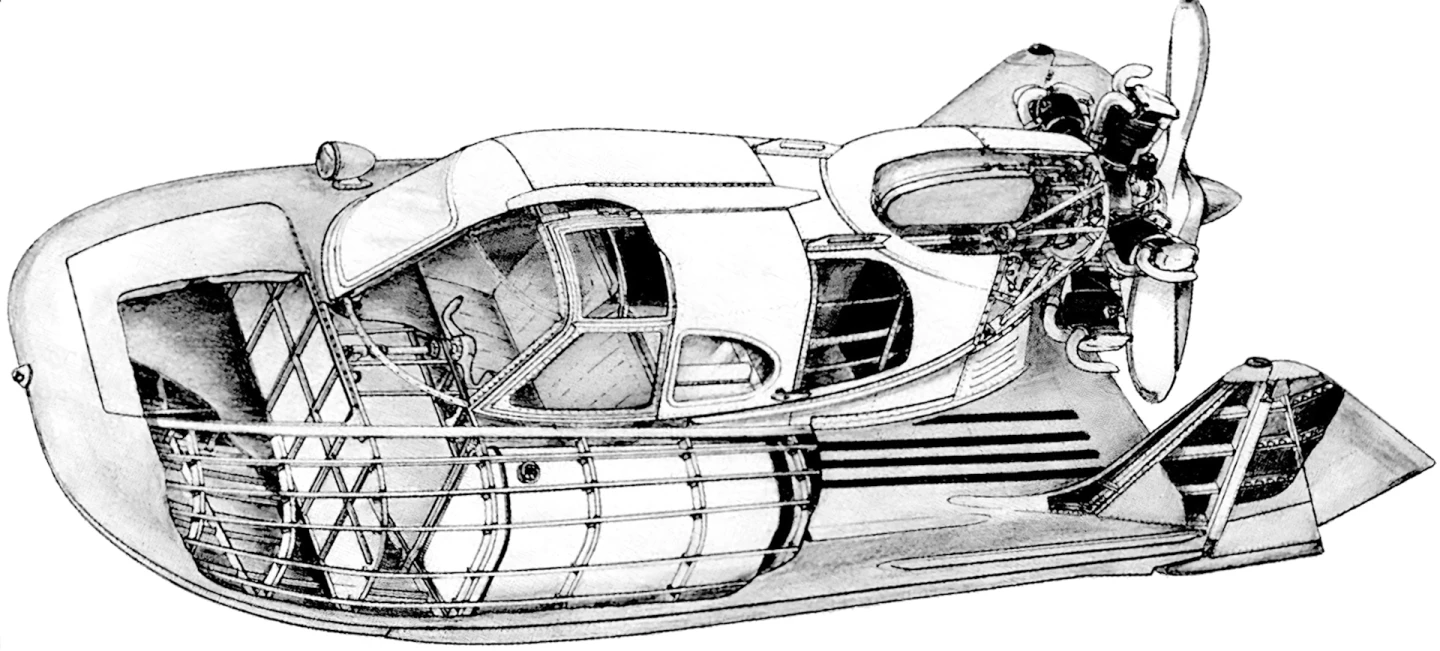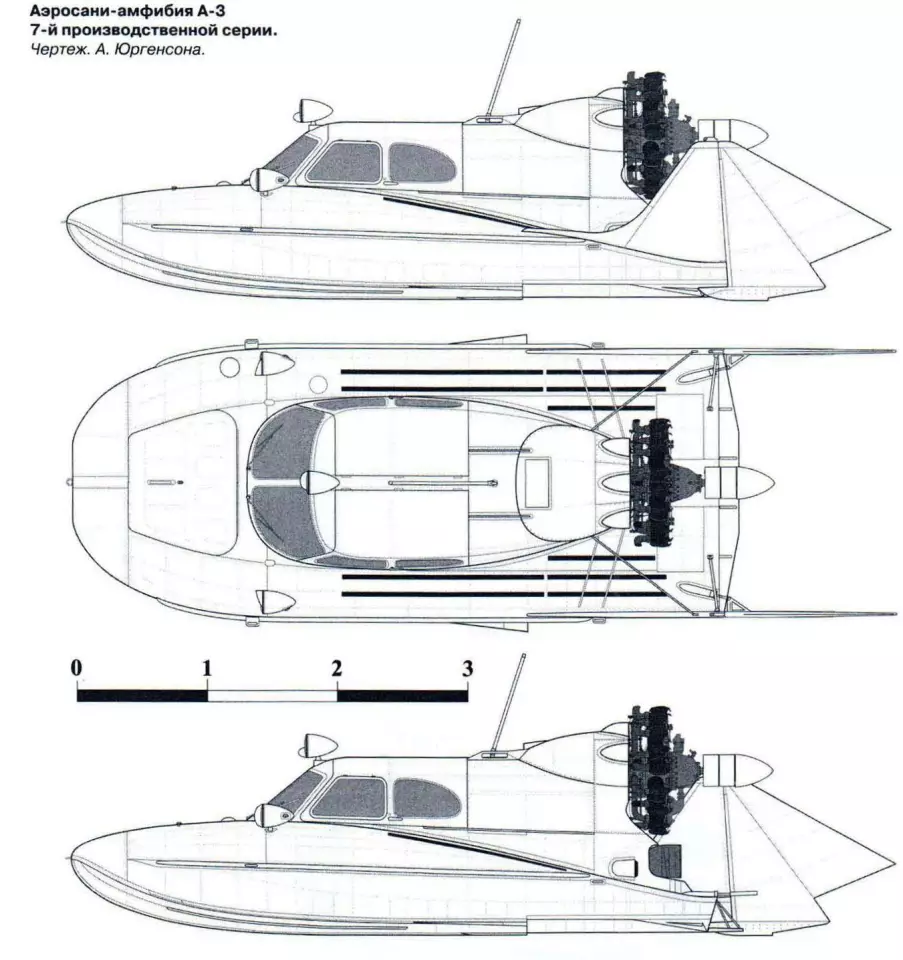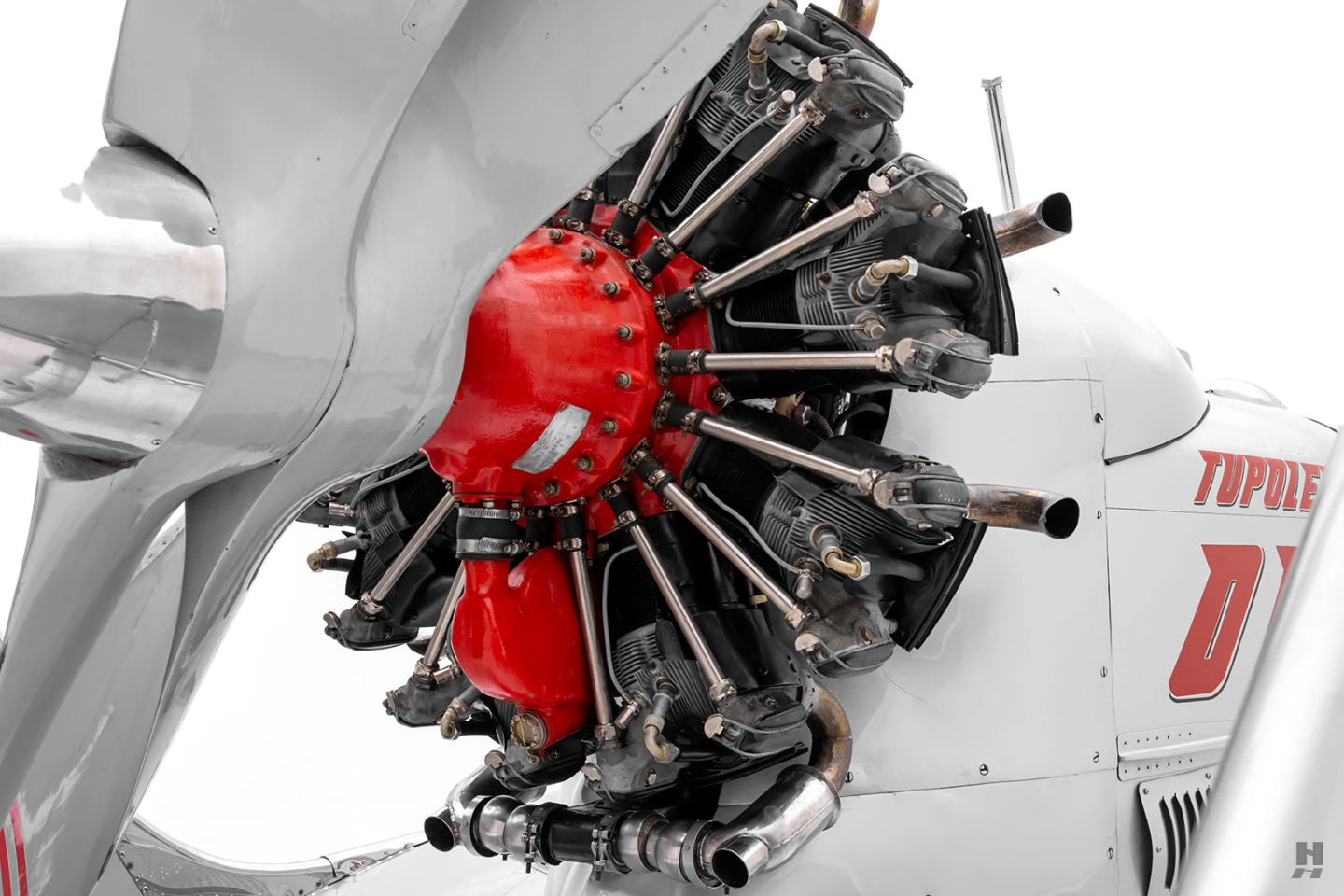Updated 17 March 2025 - Originally published 6 November 2006 - As the knowledge of the world begins to rush rather than seep across the barriers of language and distance via the internet, whole new areas of regionalised human endeavour are becoming visible to the world, and the glorious history of the Russian aerosled is a case in point.
The aerosled that appears to have changed the course of the the Russian industry was the Tupolev A-3. It was extensively reported in the western media 30 years after its availability in Russia, mainly because a single fully-restored unit made it to the west, where it has been a prominent regular at collector car auctions for 20 years, initially fetching $187,000 in 2007, with a high of $220,000 in 2015.
It evolved from an adapted horse-drawn sleigh powered by a pusher prop 100 years ago to become a thriving ski-automobile industry and with sponsorship from the Russian Military in the Cold War era, developed capabilities that are truly extraordinary.
The original story on the Russian-built Tupolev A-3 Aerosled was precipitated by a January 2007 Barrett-Jackson Collector Car auction which included a fully-restored specimen.

The unit is the only known Russian-built Tupolev A-3 to make it to the United States, but they’re not quite that rare in Russia, because 800 units were built during a 25-year production run. The Tupolev A-3 was designed by the Tupolev Design Bureau, founded in 1922 by Andrei Tupolev (generally regarded as the father of Soviet aviation), which designed over 100 different civilian and military aircraft and produced more than 18,000 aircraft for Russia.
The A-3 can propel itself through and protect its occupants from the sub-zero conditions common in the Russian tundra. Powered by a 365 hp nine-cylinder radial engine it hovers just over water, marshland, ice or snow and given a flat stretch, is claimed to reach 80 mph. Part ground effect aircraft, part boat but mainly a sled, the A-3 is a wonderful example of human being’s ability to adapt and conquer any terrain.

The A-3 reached the United States when Juergen Shulte, a German-born businessman and resident of Clarksville, Ga., purchased it in Russia in 1999 and embarked on a rigorous restoration process with engineers across the globe.
Following the rebirth of the vehicle formerly used as a rescue craft, it was awarded the “Corinthian Award” in 2005 and 2006 at the Keels and Wheels Concours d’Elegance in Houston and the 2006 “Award of Excellence” at the Greenwich Concours d’Elegance in Greenwich, Connecticut.
The A-3 was the result of the needs of the Soviet space program, which needed to quickly reach returning cosmonauts in arctic conditions. The re-entry window for returning spacecraft can vary wildly, with maybe hundreds of miles of snow and ice between the rescuers and the returning cosmonauts.

The A-3 is lightweight and compact, and was designed to fit inside a Russian Military Mi-6 transport helicopter, or be hung beneath it, fully-crewed, on cables for immediate deployment. It's role was to quickly reach areas inaccessible to ground and air transport, so it would be deposited on the ground as close as possible to the spacecraft and get to do its thing.
Doing its thing was the sled's forte, and having the good fortune to be designed by a genius, the Tupolev A-3 had capabilities that hadn't been seen before and it quickly outgrew the Space Program and became indispensable in many roles across Russia as it could traverse previously unpassable terrain and previously unnavigable rivers at speed.

The smooth surface of the amphibian enabled it to pass through meter-high bushes and sparse forest. The A-3 was simultaneously a boat capable of operating with a 5cm draft, a sled when there was less water, and as it uses ground effect to provide its own air cushion, it basically swims, bounces and slithers across any terrain, be it ice, water, frozen earth or acres of slushie. When it went into production in 1964, it had a 120 km/h maximum speed and could carry a 1200 kg payload. We've written about the innovations incorporated into the A-3 in detail in a separate article, but there are a few punchlines relevant to this story.
Not surprisingly, the A-3 was warmly received wherever it was witnessed and demand for the A-3 outstripped supply as it was variously pressed into service by the military in countless ways, with 800 units being produced and the A-3 eventually seeing a lot more non-military service across the Russian tundra's seven time zones. There are reportedly still units in service today, still servicing remote outposts with passenger and freight service, plus filling the everyday needs of arctic communities such as search and rescue and polar ambulance.

The A-3 became a very influential vehicle because it highlighted just how efficient an aerosled could be given a bit of thought - taking running costs into account, the cost-per-kilo of transportation on the A-3 was half that of traditional aerosled and 30% less than on boats. That's an important statistic because the world's trade goes almost exclusively by boat. There is an efficiency to be found here that deserves greater exploration. Carrying the same commercial load, the range of the A-3 was also more than double that of ski aerosleds.
The A-3 was an extremely effective multipurpose machine, widely used to take medical assistance to remote regions, as a transportation solution for passengers and important freight, and rescue operations where conditions made roads impassable.

The basic construction of of the A-3 was an aluminium semi-monocoque construction with three airtight sections. The central section contained the heated, soundproofed cabin. In all-passenger configuration, four armchairs were fitted, and in freight mode, two seats were fitted with additional space for the cargo.
Suggested Reading: The Aerothrust- an insanely great idea
















































